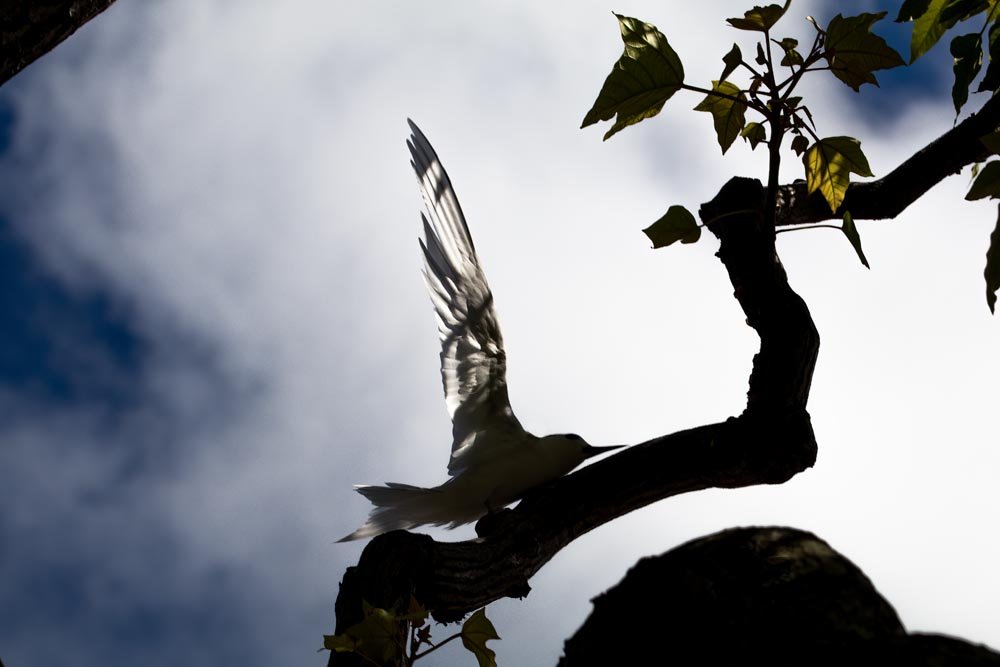05.12.22 - 05.31.22
And this is all she wrote. Tsuki has flown her birth tree and favorite sunbathing trees!
Bye bye Tsuki 月!
06.02.22 — A white tern flew over the green during the HNS graduation. Without a doubt she was wishing the graduates “Happy flying!”
05.12.22
White Terns belong to a seabird group known as “tuna birds”… The name comes from the bird’s foraging technique. When hunting, tuna, dolphinfish (mahimahi), other predatory fish and dolphins drive small fish and squid to the water’s surface, making them available to seabirds hunting above.
—Susan Scott, Hawaiʻi’s White Tern
05.20.22
One charming trait of White Terns is their ability to hold fish crosswise in their beaks and still catch more.
—Susan Scott, Hawaiʻi’s White Tern
05.26.22
Often, White Terns leave their trees at sunrise and come home at sunset, but sometimes parents make two or more fishing trips in one day.
—Susan Scott, Hawaiʻi’s White Tern
05.27.22
Neither kukui trees not mahogany trees are common in Honolulu, yet terns seek them out, probably because those trees offer prime egg-balancing opportunities.
—Susan Scott, Hawaiʻi’s White Tern
Males and females share sitting equally, usually staying 24 to 48 hours. Shift lengths vary according to couple, however, with some changing after six hours and other brooding as long as 72 hours.
—Susan Scott, Hawaiʻi’s White Tern
05.31.22
The mottled tan chick, with brown or black streaks on its head, hatches in 35 to 36 days on average.
—Susan Scott, Hawaiʻi’s White Tern






































































































